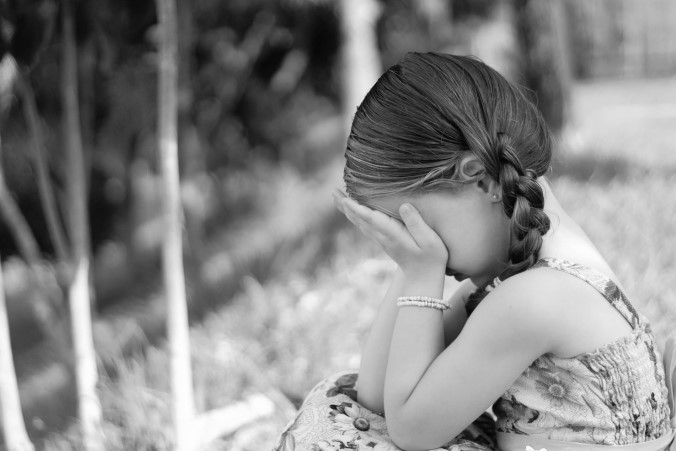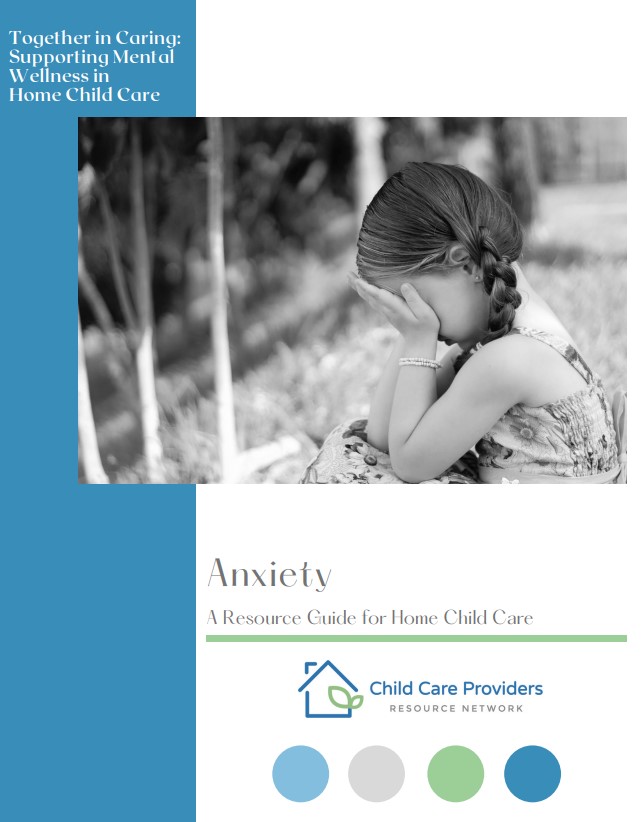We All Worry
Adapted from "Anxiety: A Resource Guide for Home Child Care"
We all worry—some more than others. The same is true for children. It is natural and normal to worry and have fears. In fact, it is very common for young children to express a wide range of worries. The world is new, and their frame of reference is small. Worry and fear are different forms of anxiety and are a normal part of development.
The brain’s alarm system alerts us to threat and keeps us safe—that little voice, those gut feelings, the spontaneous physiological symptoms—they all have a purpose, and thankfully so. Plus, we’re all familiar with fight, flight, or freeze—the most common reactions when faced with danger. This is your brain, doing its job to keep you safe. Letting you know that something’s not right. For some people though, their internal alarm system is naturally more sensitive and therefor more easily activated. They worry more.

Preparedness and prudence help to keep our worries in check. Preparing for a test, new job, or presentation will often lessen the worry and help to keep us calm. With increased preparedness, the level of threat decreases. Similarly, being prudent in a potentially dangerous situation (i.e., wearing a seatbelt or bike helmet) can also help to minimize the risk of danger and keep us safe.
Because young children can’t judge what is dangerous, they don’t prepare for danger and aren’t prudent enough to be careful and avoid it. It’s the adult’s job to keep them safe. Through our relationship with a child, we can help to calm their alarm system by being present, acknowledging their worries, and helping them to understand the likelihood and/or severity of the threat.
When children are young, and their experiences are all new, their frame of reference is very small. Many experiences present as a potential threat resulting in some children having lots of worries—especially those with more sensitive internal alarm systems.
For example: An infant who loses sight of their parent truly doesn’t know where that parent went or if they ‘ll be back—Where are you? Who will take care of me? Who will keep me safe? They cry and learn that although we might be out of sight, we are close by and will always respond to their needs. As they grow and experience more frequent and prolonged types of separation (nighttime, being cared for by Grandma, child care, etc.), they learn that the parent always returns which builds trust in the relationship. Their worries are calmed by that knowledge and by the predictability of the experience—the parent’ s consistent return. Eventually, this worry dissipates, and the child is comfortable going to school, to a friend’ s house, and before you know it—moving out on their own. Their frame of reference for “being apart” is large and they are able to stay connected without having to have the parent within sight.

Understanding the brain’s alarm system and a child’s limited frame of reference helps to explain why they worry. When we understand why children worry, we are better able to support them in their ability to handle their own fears and worries.
Interested in learning more about common childhood fears and how exactly you can help? Take a look at our free e-book Anxiety: A Resource Guide for Home Child Care. Available as a free download under the Resources section of our website.

